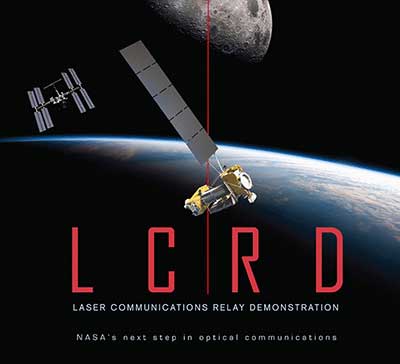GS-3: Science and Technology- developments and their applications and effects in everyday life.
Keywords: NASA, LCRD, Radio Wave, laser Wave, optical communication, Electromagnetic spectrum.
Why in News:
- On December 7, around 3.50 pm IST, NASA launched its new Laser Communications Relay Demonstration (LCRD) — the agency’s first-ever laser communications system — from Cape Canaveral Space Force Station in Florida. The LCRD will help the agency test optical communication in space.
What is Laser Communications Relay Demonstration (LCRD?
- The Laser Communications Relay Demonstration is a NASA mission that will test laser communication in space for extremely long distances, between Earth and geosynchronous orbit.
- It will be NASA’s first two-way optical communications relay system and showcase the unique capabilities of optical communications.
- Optical communications, or laser communications, uses infrared lasers to transmit data.
- It is integrated into STPSat-6, part of STP-3, currently due to launch on 7 December 2021 on an Atlas V 551.It will be in a geosynchronous orbit, over 35,000km above Earth.
- LCRD is a technology demonstration that will pave the way for future optical communications missions.
- Currently, most NASA spacecraft use radio frequency communications to send data. Optical communications will help increase the bandwidth 10 to 100 times more than radio frequency systems.
- LCRD has two optical terminals – one to receive data from a user spacecraft, and the other to transmit data to ground stations. The modems will translate the digital data into laser signals. This will then be transmitted via encoded beams of light. These capabilities make LCRD NASA’s first two-way, end-to-end optical relay, the agency said in a release.
How Laser wave communications different from radio waves communications?
- Laser communications and radio waves use different wavelengths of light. Laser uses infrared light and has a shorter wavelength than radio waves.
- This will help the transmission of more data in a short time. Ex. It would take roughly nine weeks to transmit a completed map of Mars back to Earth with current radio frequency systems. With lasers, we can accelerate that to about nine days.
- Using infrared lasers, LCRD will send data to Earth at 1.2 gigabits-per-second (Gbps). At this speed, it will take less than a minute to download a movie.

Optical communications:
- Optical communication, also known as optical telecommunication, is communication at a distance using light to carry information. Free-space optical communication use lasers to transmit signals in space, while terrestrial forms are naturally limited by geography and weather.
Advantages of Optical Communication:
- Long Transmission Distance, Save Energy: Suppose you want to transmit 10Gb of information in one second (10 billion signals). If you use electrical communication, you need to adjust the signal every 100 meters. In contrast, using optical communication requires an interval of more than 100 kilometers.
- Transmit Massive Amount of Information at One Time: Using optical communication, a large number of users can receive the required information at the same time (movies or news, etc.). optical communication can transmit information of up to 1Tb (1 trillion 0 and 1 signals).
- Savings in mass: Reduced mass enables decreased spacecraft cost and/or increased science through more mass for the instruments
- Savings in power: Reduced power enables increased mission life and/or increased science measurements
- Up to 20x increase in data rate.
NASA Optical Communications Projects:
- Lunar Laser Communication Demonstration (LLCD): 2013-2014
- Laser Communications Relay Demonstration (LCRD): 2021
- Integrated LCRD Low-Earth Orbit User Modem and Amplifier Terminal (ILLUMA-T): 2022
- Psyche and Deep Space Optical Communications (DSOC): 2022
Source: Indian Express
Mains question:
Q. What is optical communication? Which is the significance of NASA’s LCRD in Deep Space Communication?









